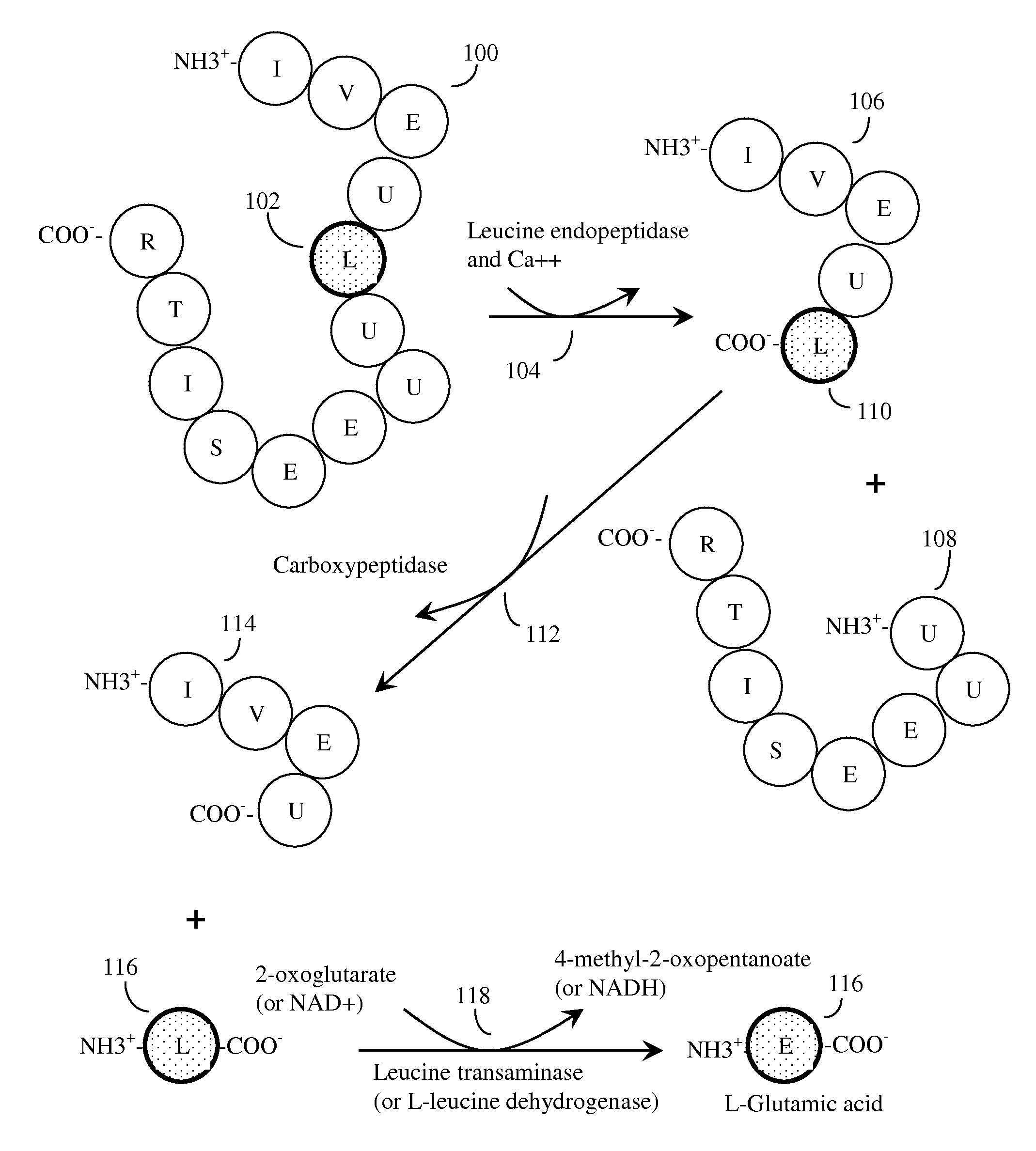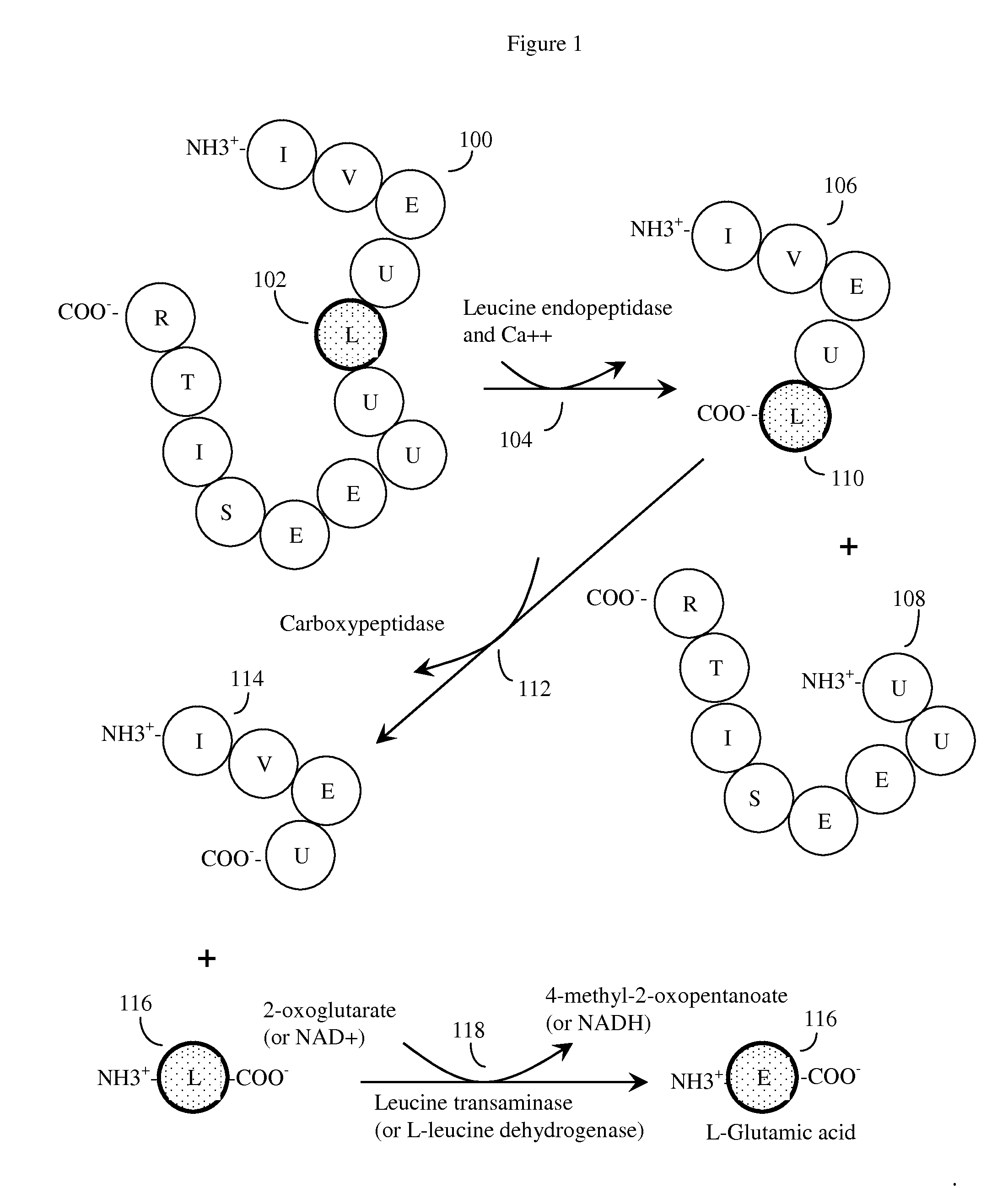mTOR PATHWAY OPTIMIZED NUTRITIONAL COMPOSITIONS
a nutritional composition and mtor pathway technology, applied in the field of nutrients, dietary supplements, metabolic regulators, can solve the problems of low cost, few if any natural protein sources available in large volumes, and significant deficiency of leucine, and achieve low cost, inhibit the mtor pathway, and low cost
- Summary
- Abstract
- Description
- Claims
- Application Information
AI Technical Summary
Benefits of technology
Problems solved by technology
Method used
Image
Examples
Embodiment Construction
[0024]As previously discussed, often the starting material for the process will be a protein hydrolysate. Although in principle, any protein hydrolysate may be used, often it will be convenient to utilize those low cost, commercially available protein hydrolysates that are often used for human nutritional purposes.
[0025]Examples of such commonly used protein hydrolysates include the milk-derived casein or whey hydrolysates, as well as other protein hydrolysates such as soy hydrolysates.
[0026]Although proteins may be degraded to smaller peptides and amino acids by chemical techniques, such as acid or alkali hydrolysis, pure chemical (non-enzymatic) methods have the drawback that they can convert L-amino acids to toxic D-amino acid forms, destroy essential amino acids, and produce toxic byproducts.
[0027]Thus, in order to preserve the nutritional content of the protein, prior art protein hydrolysis methods have tended to focus on the use of enzymatic digestion techniques using broad sp...
PUM
| Property | Measurement | Unit |
|---|---|---|
| Composition | aaaaa | aaaaa |
| Toxicity | aaaaa | aaaaa |
| Glycemic index | aaaaa | aaaaa |
Abstract
Description
Claims
Application Information
 Login to View More
Login to View More - R&D
- Intellectual Property
- Life Sciences
- Materials
- Tech Scout
- Unparalleled Data Quality
- Higher Quality Content
- 60% Fewer Hallucinations
Browse by: Latest US Patents, China's latest patents, Technical Efficacy Thesaurus, Application Domain, Technology Topic, Popular Technical Reports.
© 2025 PatSnap. All rights reserved.Legal|Privacy policy|Modern Slavery Act Transparency Statement|Sitemap|About US| Contact US: help@patsnap.com


